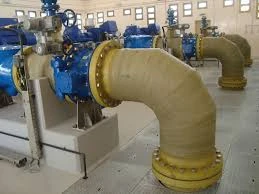
-
 Afrikaans
Afrikaans -
 Albanian
Albanian -
 Amharic
Amharic -
 Arabic
Arabic -
 Armenian
Armenian -
 Azerbaijani
Azerbaijani -
 Basque
Basque -
 Belarusian
Belarusian -
 Bengali
Bengali -
 Bosnian
Bosnian -
 Bulgarian
Bulgarian -
 Catalan
Catalan -
 Cebuano
Cebuano -
 China
China -
 China (Taiwan)
China (Taiwan) -
 Corsican
Corsican -
 Croatian
Croatian -
 Czech
Czech -
 Danish
Danish -
 Dutch
Dutch -
 English
English -
 Esperanto
Esperanto -
 Estonian
Estonian -
 Finnish
Finnish -
 French
French -
 Frisian
Frisian -
 Galician
Galician -
 Georgian
Georgian -
 German
German -
 Greek
Greek -
 Gujarati
Gujarati -
 Haitian Creole
Haitian Creole -
 hausa
hausa -
 hawaiian
hawaiian -
 Hebrew
Hebrew -
 Hindi
Hindi -
 Miao
Miao -
 Hungarian
Hungarian -
 Icelandic
Icelandic -
 igbo
igbo -
 Indonesian
Indonesian -
 irish
irish -
 Italian
Italian -
 Japanese
Japanese -
 Javanese
Javanese -
 Kannada
Kannada -
 kazakh
kazakh -
 Khmer
Khmer -
 Rwandese
Rwandese -
 Korean
Korean -
 Kurdish
Kurdish -
 Kyrgyz
Kyrgyz -
 Lao
Lao -
 Latin
Latin -
 Latvian
Latvian -
 Lithuanian
Lithuanian -
 Luxembourgish
Luxembourgish -
 Macedonian
Macedonian -
 Malgashi
Malgashi -
 Malay
Malay -
 Malayalam
Malayalam -
 Maltese
Maltese -
 Maori
Maori -
 Marathi
Marathi -
 Mongolian
Mongolian -
 Myanmar
Myanmar -
 Nepali
Nepali -
 Norwegian
Norwegian -
 Norwegian
Norwegian -
 Occitan
Occitan -
 Pashto
Pashto -
 Persian
Persian -
 Polish
Polish -
 Portuguese
Portuguese -
 Punjabi
Punjabi -
 Romanian
Romanian -
 Russian
Russian -
 Samoan
Samoan -
 Scottish Gaelic
Scottish Gaelic -
 Serbian
Serbian -
 Sesotho
Sesotho -
 Shona
Shona -
 Sindhi
Sindhi -
 Sinhala
Sinhala -
 Slovak
Slovak -
 Slovenian
Slovenian -
 Somali
Somali -
 Spanish
Spanish -
 Sundanese
Sundanese -
 Swahili
Swahili -
 Swedish
Swedish -
 Tagalog
Tagalog -
 Tajik
Tajik -
 Tamil
Tamil -
 Tatar
Tatar -
 Telugu
Telugu -
 Thai
Thai -
 Turkish
Turkish -
 Turkmen
Turkmen -
 Ukrainian
Ukrainian -
 Urdu
Urdu -
 Uighur
Uighur -
 Uzbek
Uzbek -
 Vietnamese
Vietnamese -
 Welsh
Welsh -
 Bantu
Bantu -
 Yiddish
Yiddish -
 Yoruba
Yoruba -
 Zulu
Zulu
Lightweight Fiberglass Shell for Enhanced Durability and Versatile Applications
The Versatile World of Fiberglass Shells
Fiberglass shells have become a cornerstone in various industries, owing to their durability, lightweight nature, and versatility. From boats to automotive parts, and even in construction, fiberglass shells provide solutions that cater to both functionality and aesthetic appeal. This article delves into the properties, applications, and the burgeoning future of fiberglass shells.
Understanding Fiberglass
Fiberglass is a composite material made from a polymer matrix reinforced with fine glass fibers. The process involves weaving these glass fibers into a mat, which is then combined with resin to form a solid structure. The unique combination of glass and resin results in a lightweight material that possesses excellent strength and resistance to corrosion, making it an increasingly popular choice across different sectors.
One of the most compelling attributes of fiberglass is its resilience. Unlike metal, which can corrode over time, fiberglass is impervious to rust and can withstand various environmental conditions. This property makes fiberglass shells especially desirable in marine applications, where they are used in boat hulls, kayaks, and other watercraft.
Applications of Fiberglass Shells
1. Marine Industry The marine industry was one of the first to adopt fiberglass technology extensively. Fiberglass shells are used for crafting boats, yachts, and even surfboards, thanks to their buoyancy and resistance to marine corrosion. This has revolutionized boat manufacturing, allowing for production that is faster and often more cost-effective than traditional materials.
2. Automotive Manufacturing Fiberglass is utilized in the automotive industry for creating body panels and components. The material is particularly favored for producing custom car parts and sports cars due to its lightweight nature, which helps improve fuel efficiency and performance. Additionally, fiberglass can easily be molded into intricate shapes, providing designers the freedom to innovate.
3. Construction and Architecture In recent years, fiberglass shells have found a place in the construction industry. They can be used for roofing systems, curtain walls, and other structures where lightweight yet sturdy materials are needed. The aesthetic versatility of fiberglass also allows architects to explore modern designs, often resulting in striking visual appearances.
fiberglass shell

4. Aerospace Applications The aerospace sector’s rigorous standards for weight and strength have positioned fiberglass shells as a feasible option. Many aircraft components are now made with fiberglass materials, optimizing performance while ensuring safety and reliability.
5. Art and Design Beyond functionality, fiberglass shells are increasingly being used in art installations and design work. The material can be painted or finished in various ways, allowing artists and designers to create visually stunning pieces while benefiting from the robustness of fiberglass.
The Environmental Considerations
While fiberglass offers numerous benefits, it is important to address the environmental concerns associated with its production and disposal. Traditional fiberglass manufacturing processes can generate greenhouse gases, and the material itself is not biodegradable. However, advancements are being made in recycling methods and the development of bio-based resins, which can enhance the sustainability of fiberglass use.
The Future of Fiberglass Shells
The future of fiberglass shells appears bright, fueled by ongoing innovations and the search for more sustainable practices. As industries increasingly prioritize lightweight and strong materials, fiberglass is poised to play a significant role. Researchers are exploring ways to improve the environmental footprint of fiberglass production, recycling, and enhancing performance characteristics.
Moreover, as the demand for electric vehicles rises, incorporating lightweight materials like fiberglass could improve battery efficiency by reducing overall vehicle weight. This indicates a promising future for fiberglass in the rapidly changing automotive landscape.
Conclusion
Fiberglass shells represent a remarkable intersection of functionality, versatility, and design. Whether it’s enhancing the performance of watercraft, revolutionizing automotive parts, shaping modern architecture, or pushing boundaries in art, fiberglass continues to carve out a critical niche across various fields. As sustainability becomes increasingly essential in materials science, fiberglass is likely to adapt and evolve, securing its place in the future of manufacturing and design. With ongoing advancements and applications, the possibilities seem endless in the world of fiberglass.









